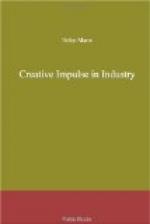[Footnote A: Stanley Hall, Educational Problems; p. 624.]
Dr. Hall’s idea of a Book of Industry might have emanated from the heart of Mr. Carnegie. With the same benign detachment he seems to have mused at his desk about the shoe industry and the people engaged in it. It would not take more than a passing acquaintance with the girls and men in shoe manufacturing towns to know that if there was established a village library equipped with the history of shoes, the aesthetics of shoes, shoe economics, shoe technology, and shoe hygiene, not one of the girls or men who worked in the shoe factories would darken its doors to read about shoes. They would not for this simple reason; the workers’ “individual and vocational interest” does not exist. They would say that they already knew more than they cared to about shoes. No literature could add culture or dignity to the job of stitching vamps for all the working hours and days of a wage earner’s year, while there is no experience of cultural value in the occupation, divided as the making of a shoe is into some ninety operations, and distributed among ninety workers. Dr. Hall’s suggestion that a Shoe Book be written is a good suggestion but he must supply a better basis for a reader’s interest than industry has given him, that is, industry as it is now administered. He cannot impose culture or dignity through books on a trade which is prostituted by business for profiteering. If the purpose of the Shoe Book was to create the glamor that was intended around the present day arrangement of making shoes, it would be a false contribution in schoolroom equipment; it would be as pernicious as other literature that introduced an artificial note into a real and living experience like industry.




